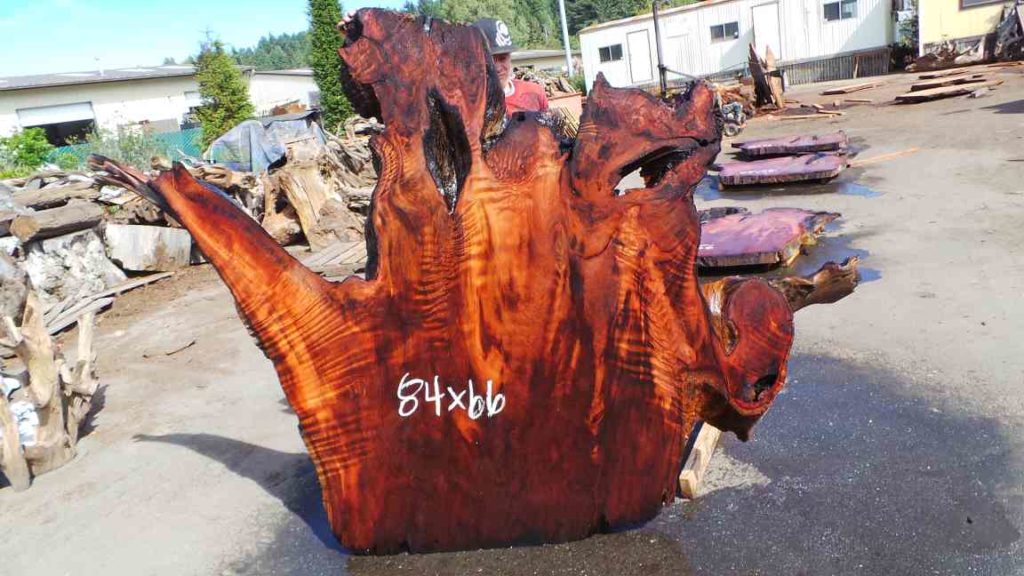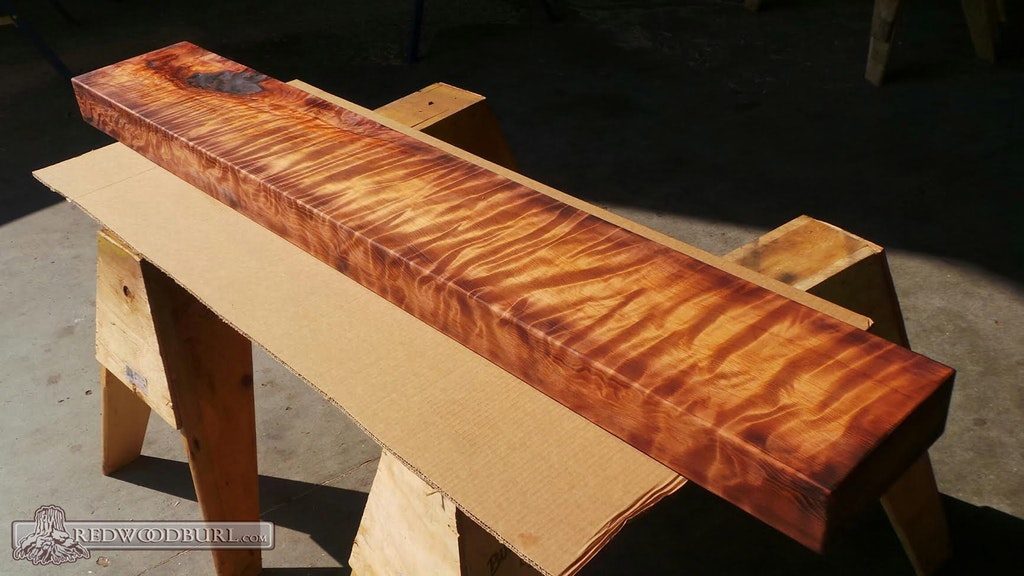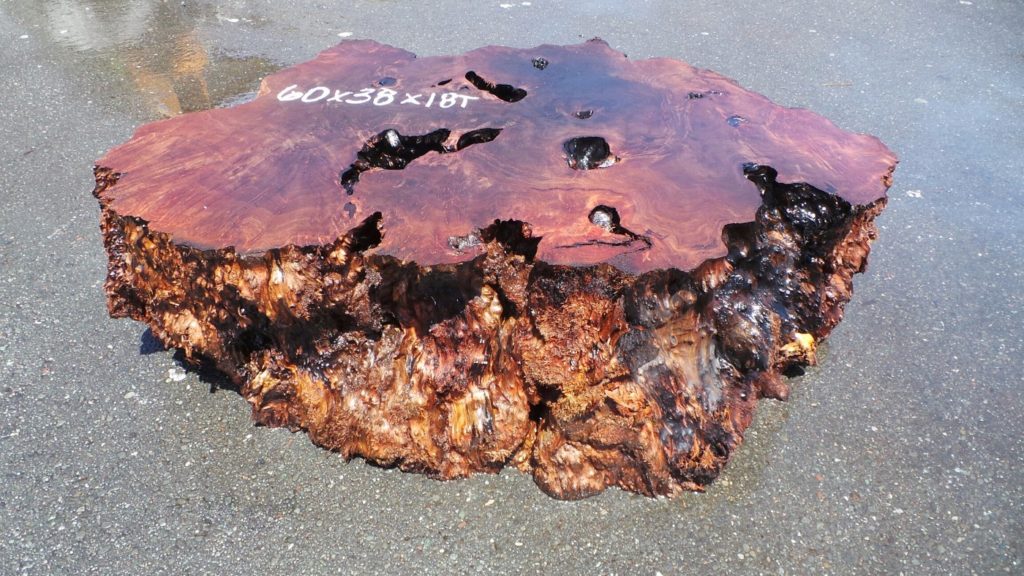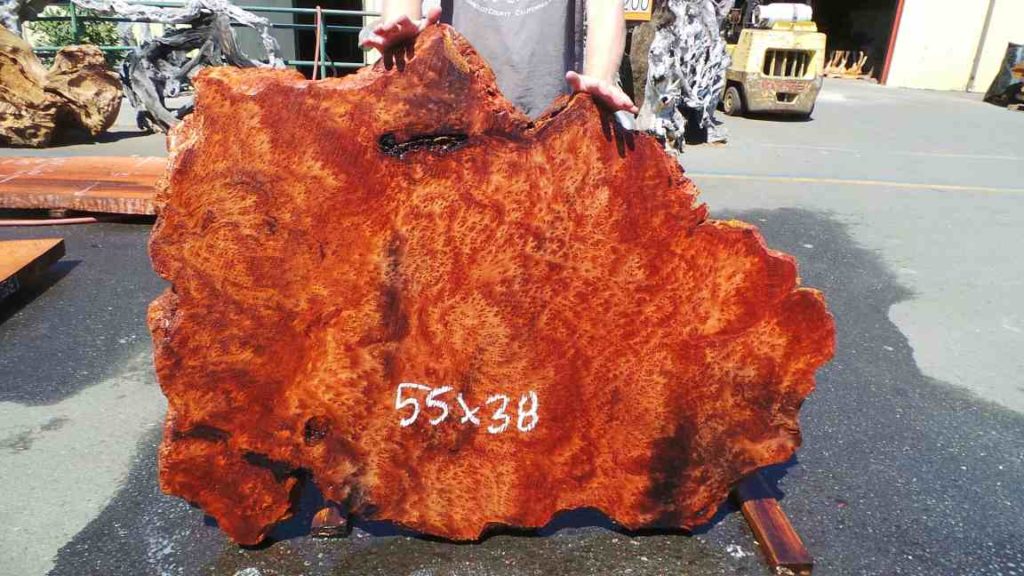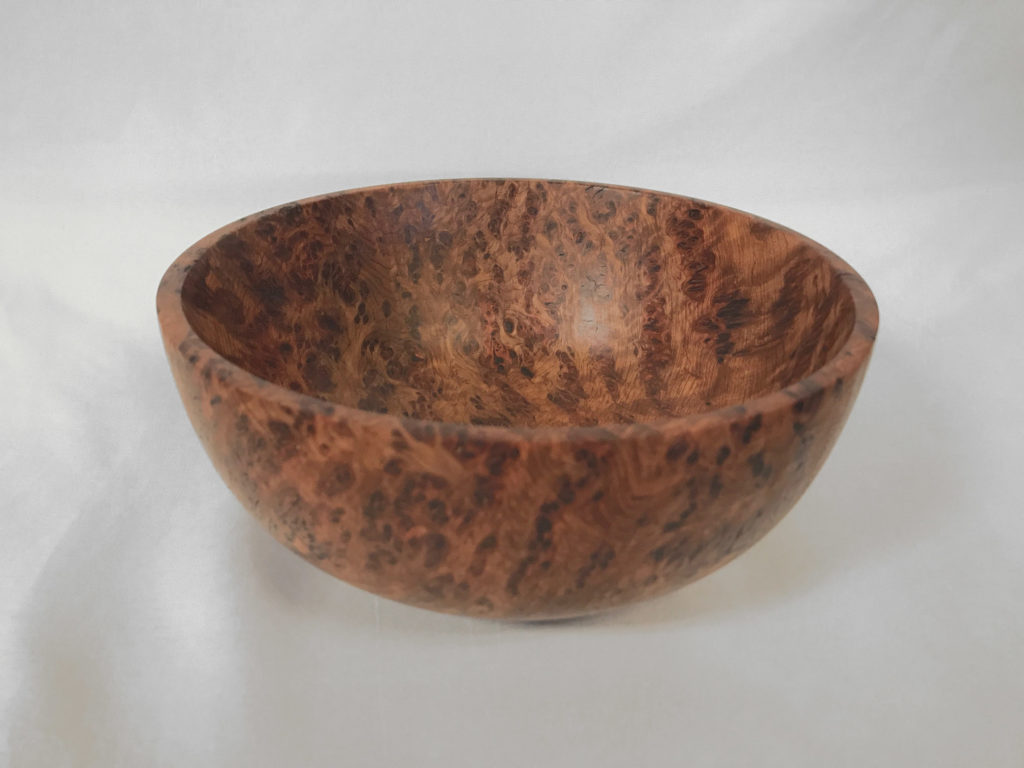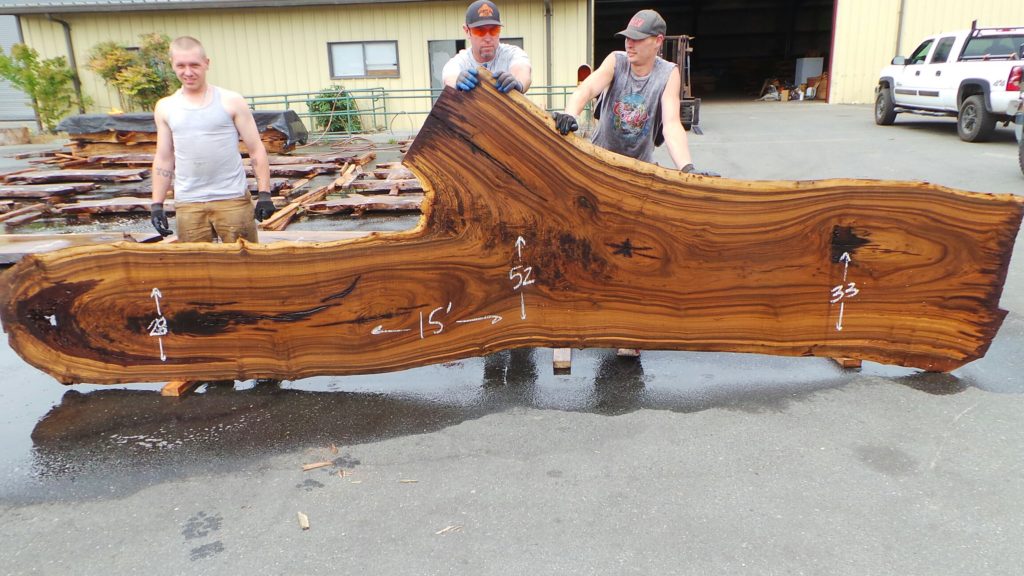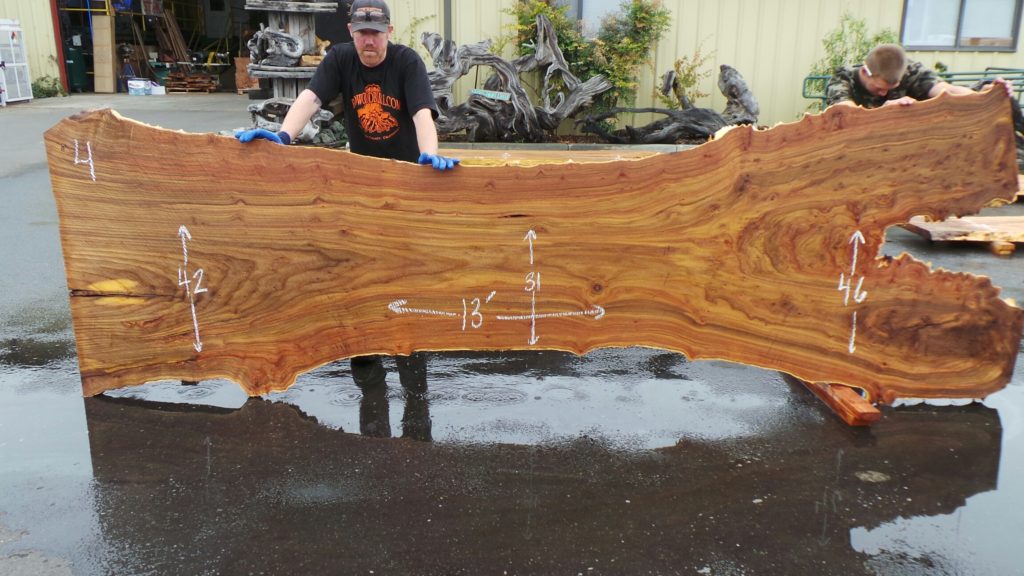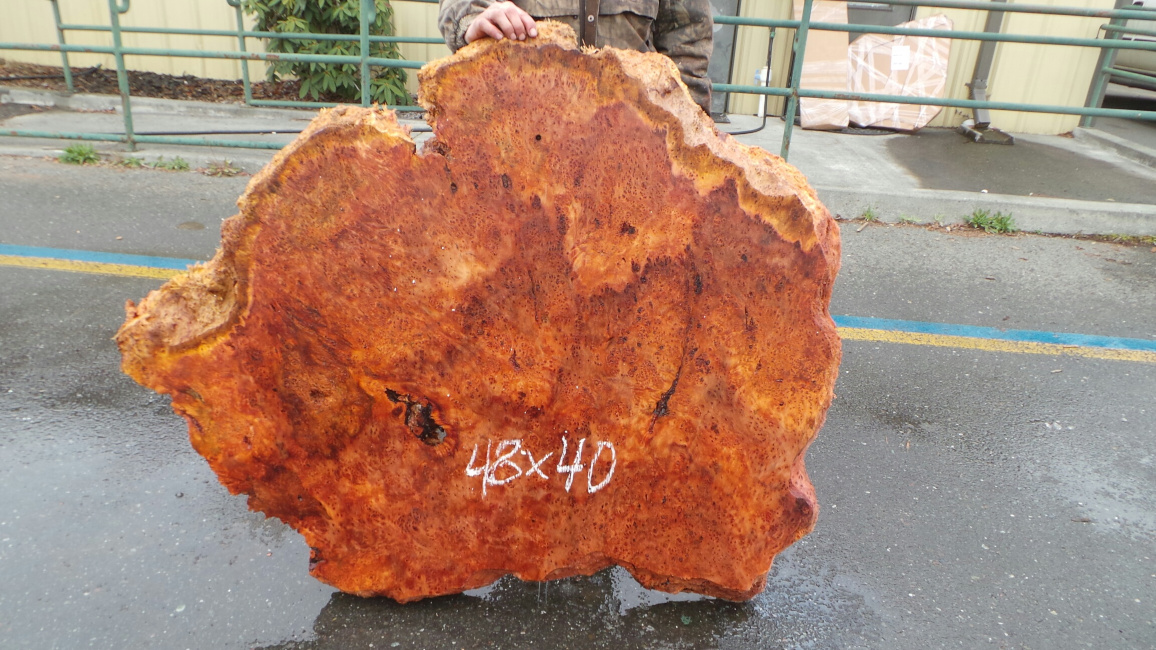
When working with burl wood, it’s common to see a wide variety of grain patterns and textures. There are many different types of burl wood, varying in pattern and intensity. Each piece of wood is unique, with different combinations of color and grain, and the quality of the burl often affects its value. Highly figured, burly or curly pieces are more sought after than straight grain, and generally have a higher price on the market. But what makes a piece of wood “highly figured,” and how do you identify these different grain patterns? This blog post will discuss the common grain patterns and types of burl we see in redwood. If you are looking for a general overview of burl wood, check out our “What is Burl Wood?” blog post or our “How does a burl grow?” blog post for burl growth information.
Types of Burl Wood Grain Patterns
Working with redwood, we regularly see a lot of variation in the wood grain. Even slabs of woodcut from the same tree can have vastly different characteristics, depending on the age of the tree, the conditions under which it grew, and many other factors. Some of the types of grain you might see in redwood include:
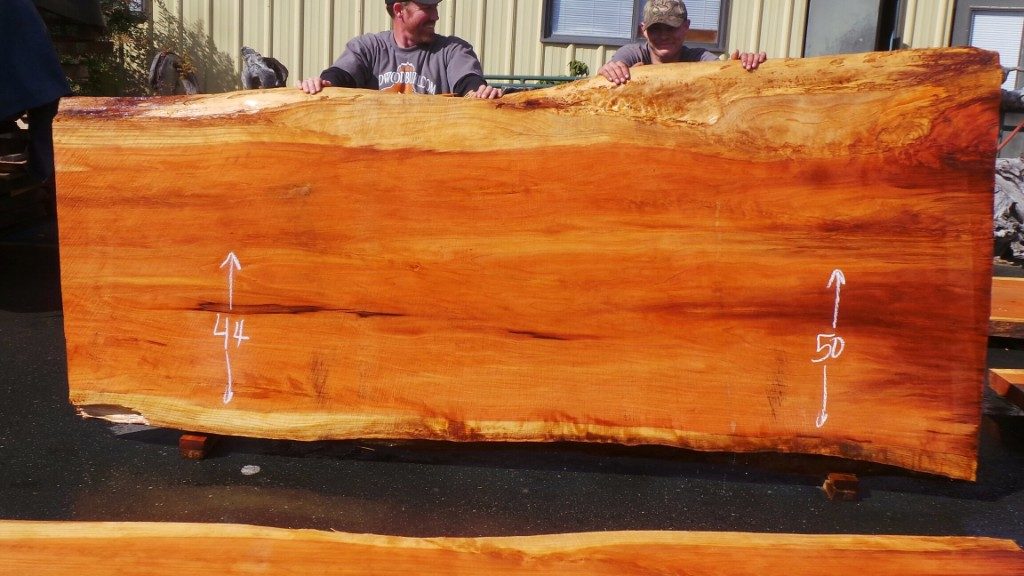
Straight Grain
As the name suggests, straight grain wood has a grain that goes in one direction and is relatively straight. This is a fairly standard growth pattern without irregularities in the grain, and while it lacks the interesting figure found in burl wood it can still be quite beautiful. Straight grain redwood is more stable than burl wood and is preferable for lumber used in construction.
Figured Grain
The term figured can be used to describe any wood grain pattern that isn’t just ordinary straight grain. Figured wood can have a number of different patterns, and varies in intensity from small irregularities to vivid patterns across the cut surface of the wood. The color variation in redwood shows especially clearly in highly figured pieces like the slab shown below.
Curly Grain
Curl or compression grain occurs when a tree grows on a slope. The grain on the side of the tree facing uphill becomes more tightly packed than on the downhill side, giving it a curled or wavy appearance. However, it is speculated that genetics are also at play when the entire tree has a curly, wavy grain. When cut and finished, this gives the wood a unique depth and color. Curly grain redwood is also known as fiddle-back or tiger stripe redwood. Looking at the stripes on the cut surface of this wood, it’s easy to see why.
Burl
Burls are growths with irregular grain patterns that form after a tree is damaged or stressed in some way. Though they are usually found in the roots of a tree, they can occur anywhere. Live burls refer to large or small growths coming off the side of a tree, while crown burls are found at the very base of the tree. Check out our blog post on burl wood for more information.
Not all burls are the same. Since they are naturally occurring and have so much variation, it can be difficult to categorize different types of burl wood. However, there are certain patterns in burl that become easier to recognize the more you work with them. Some of the more well-known varieties include lace burl and bird’s-eye.
Lace Burl
Lace burl is a rare, high-quality burl pattern. It is a graduated version of a bird-eye burl. These pieces have small curls and burls in the grain that form a lacy pattern. Slabs of lace burl often have rich color and unique patterns and textures, often compared to veins. It is commonly found in the crown or live burls on trees, not in the common stump burl.
Bird’s-Eye Burl
Bird’s-eye burl is a rare but beautiful burl pattern featuring small, tightly packed burls that show as dark “eyes” on the cut surface of the wood. Burl with bird’s-eye is rarely found in Redwood, but when it is it is highly sought-after. It is often found, like lacy burl, in the crown burls and live burls of a tree. This grain often goes hand-in-hand with swirly or curly redwood.
Common “Defects” in Types of Redwood Burl
Because our wood is salvaged, it’s rare for us to find a piece that’s completely flawless. Much of our wood has small cracks, knots, burls, and character voids. However, we don’t feel that these detract from a piece – rather, we think these small flaws make the wood all the more appealing. Each piece is unique and each has a natural, rustic beauty that simply can’t be found anywhere else. We are always careful to ensure that none of the knots or voids have any effect on the structural integrity of a slab.
Other Types of Burl Wood
Burls and other unusual grain characteristics can occur in almost any type of wood. While we work mostly with redwood, there are many other varieties of wood with unique grain patterns, some of which we occasionally work with within our shop. Two that we work with often are claro walnut and maple. These hardwoods can have beautiful multicolored wood and marbled grain patterns. The live edge on both maple and walnut burl has a unique texture, which makes it popular for live edge tables.
Left: a claro walnut burl slab. The wide, multicolored growth rings shown here are part of what makes claro walnut so popular among woodworkers. Though we occasionally have a few of these pieces listed on our website, most of our inventory is unlisted. If you’re interested in walnut or maple burl slabs, let us know!
We also work with elm burl on occasion, though these pieces are rare. Elm burl slabs have some truly spectacular grain patterns, as shown in the example.
Now that you know a little more about the types of burl wood we have available, check out our listings of burl wood slabs, rustic table bases, mantels, dining tables, and more. From burl wood furniture to art to home renovation projects, we look forward to helping you find the perfect piece for your project.
Tags: burl wood, burl wood grain, burl wood grain patterns, burl wood grain types, types of burl wood
